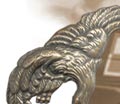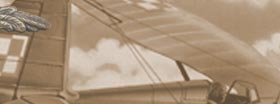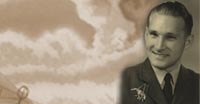T-Force: The Forgotten Heroes of 1945.
By Sean Longden (2010), Constable and Robinson,
UK ISBN 978 1 84901 297 3
On 21st July 2011 the space shuttle Atlantis touched down on its final mission at the John F. Kennedy Space Centre, Florida, thus ending a phase in the current space programme whose genus is linked to the ‘spoils of victory’ from the Second World War. Sean Longden has written a fascinating story of the forgotten heroes who searched and scavenged for Hitler’s military and industrial secrets at the war’s end.
T-Force were a secret unit sent to the collapsing front as the Allies crossed into Germany. The force was an unlikely group made up of infantry, munitions experts, commandos and teams of expert scientists. Many were not fully ‘combat ready’ due to personnel shortages in the closing days of the war. Sean Longden opens the account with Commander Ian Flemming, RNVR taking an idea for an Offensive Naval Intelligence Group modelled on Germany’s use of ‘intelligence commandos’ whose prime role was to seize documents and code books on the field of battle. Initially using a cover name Special Engineering Unit of the Special Services Brigade, they were re-named 30 Assault Unit (30AU). Like many of these operations during the war, confusion over purpose hampered their progress to a fully functioning unit active in a theatre of war.
After the Allies breakout from Normandy, some units had been severely depleted and amalgamated or plundered to keep up front-line strength. The need to keep up momentum meant the breakup of many of the British regiments. The Kings Regiment was one such unit who had won its colours in many previous campaigns and Normandy was no exception. When 30AU landed in Normandy to assault targets in Cherbourg and the radar site at Douvres, the Kings Regiment had seen the amalgamation of the 5th and 8th Battalion. The Kings Regiment had been reassigned to take an active role in special duties. As 30AU went into action scouring the French countryside for secrets, their operational mode and success stories became established particularly with the need to secure scientific and intelligence targets in case of looting. Similar units for example, Operation DUNSTABLE reported similar intelligence being lost through the vandalism of advancing units.
When the Allied high-command saw the benefits of these specialist operations, ‘Task-Force’ units were set up and independent of other combat/ occupation units in order for flexibility, so in August 1944 T-Force went into action. Their prime role now became securing documents, persons and equipment after areas had been liberated.
The 5th Battalion of the Kings Regiment became part of the T-Force and as the German front lines collapsed, the need for mobility and operate with few constraints became increasingly apparent. As T-Force moved into Germany, Sean Longden outlines numerous operations, which saw the capture of scientific and industrial material and their secrets. New weaponry, advances in gas and metallurgy together with aviation technology demonstrated the Allies had been lagging behind in key military developments.
The greatest success was the capture of the missile and jet-engine technology that became the foundation of post-war technological development. And much of it was under the advancing Soviet forces.
Sean Longden’s account of these forces making their way through various locations in Germany, Denmark and Holland manages to capture the excitement and spirit of this rather chaotic period where the front-line was fluid or incomplete, resulting in T-Force units disappearing ‘behind the lines’. T-Force pulled off many daring raids and may have claimed to be the first to have seen ‘Cold War’ action. These activities became the source material for Ian Fleming’s James Bond.
Sean Longden has meticulously researched archives and personal testimonies’ to create not only an authoritative account, but has also made sure T-Force and its activities are not forgotten.
Julian Hoseason, editor polandinexile.com





